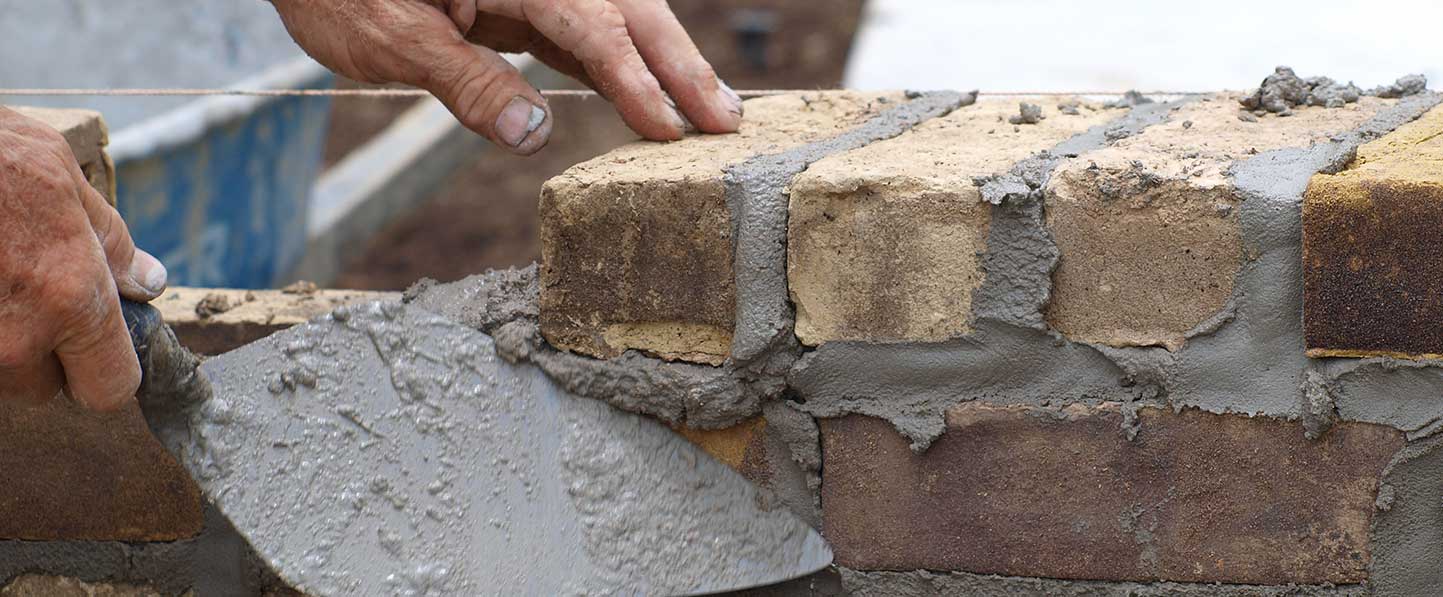Trustworthy Tuckpointing Services for Improving Block and Rock Surfaces
Trustworthy Tuckpointing Services for Improving Block and Rock Surfaces
Blog Article
Opening the Tricks of Sustainable Masonry Construction Practices for Eco-Friendly Buildings
Among the myriad strategies to environmentally friendly structure, lasting masonry building stands out as a reliable and resilient technique that holds a wide range of untapped potential. From the option of products to cutting-edge construction methods, the keys to achieving sustainability within masonry building and construction are multifaceted and interesting.
Advantages of Lasting Masonry Construction
Embracing lasting stonework building practices not just lowers ecological impact however also offers lasting financial benefits to contractors and communities. By making use of products like recycled blocks, blocks, and stones, building contractors can dramatically reduce the carbon footprint of their tasks while promoting resource performance. Furthermore, sustainable stonework building strategies, such as appropriate insulation and thermal mass residential properties, can enhance power performance within structures, leading to reduced operational prices in time.
Moreover, the durability and strength of masonry frameworks contribute to long-lasting economic advantages. Structures built making use of sustainable stonework practices often call for much less maintenance and repair service, converting to cost savings for contractors and homeowner. The durability of stonework materials likewise ensures that frameworks remain steady and safe and secure, decreasing the requirement for constant remodellings or replacements.
Eco-Friendly Stonework Materials
Using environment-friendly stonework materials is a critical step in the direction of boosting the sustainability of construction techniques and minimizing environmental effect while making the most of long-lasting financial advantages. Lasting stonework products are sourced, generated, and made use of in a manner that decreases general ecological effect. Products such as recycled blocks, reclaimed rock, and lasting cinder block are coming to be increasingly popular choices for eco-conscious home builders. Recycled blocks, as an example, not only divert waste from landfills however also require less energy to generate contrasted to brand-new bricks. Recovered stone offers a distinct aesthetic appeal while decreasing the need for brand-new quarrying. Lasting concrete obstructs integrate recycled aggregates and may include better insulation properties, adding to energy effectiveness in buildings.
Additionally, natural products like adobe, rammed earth, and straw bundles give excellent thermal mass buildings, minimizing the need for home heating and cooling energy. These products are typically in your area available, advertising regional economies and minimizing transportation-related carbon emissions. By choosing eco-friendly stonework products, construction tasks can considerably reduce their ecological impact and contribute to the production of much healthier, much more lasting constructed atmospheres.
Energy-Efficient Stonework Techniques
Power effectiveness plays an important duty in improving the sustainability of masonry building techniques. One vital energy-efficient stonework strategy is the usage of thermal mass, which includes including thick products like concrete or brick into the building's framework to soak up and save warm.

Developments in Lasting Masonry
Recent improvements in sustainable stonework practices have produced cutting-edge techniques that are reshaping the building and construction industry. One such innovation is the growth of self-healing concrete, which uses microorganisms embedded within the concrete to heal splits autonomously. This breakthrough not only decreases upkeep costs but likewise enhances the durability of masonry structures, adding to their sustainability.
Another significant technology is the use of recycled aggregates in masonry building and construction - masonry contractor. By incorporating products such as smashed from this source ceramic waste or recycled glass right into concrete blends, contractors can minimize the ecological influence of construction projects while preserving structural integrity. This method not only draws away waste from land fills yet additionally conserves natural deposits, making it a vital innovation in sustainable stonework building and construction
Moreover, the assimilation of electronic layout devices, such as Structure Details Modeling (BIM), is changing the method stonework frameworks are prepared and built. BIM enables for more accurate computations, decreased material waste, and enhanced energy efficiency, ultimately leading to more lasting structure techniques. These technologies jointly symbolize an encouraging future for sustainable stonework building and construction in the period of green structures.
Future Trends in Stonework Sustainability
With the innovative strides made in sustainable stonework techniques, the future patterns in masonry sustainability are positioned to additional reinvent the building industry. Among the crucial trends forming the future of stonework sustainability is the enhanced assimilation of modern technology. Innovations such as Building Information Modeling (BIM) and digital truth simulations are being utilized to maximize stonework building processes, leading to reduced product waste and boosted energy effectiveness in buildings.
Moreover, the advancement of novel lasting products is readied to play a substantial function in boosting the eco-friendliness of masonry building and construction. masonry contractor. Advancements like self-healing concrete, recycled aggregates, and bio-based binders are getting traction for their capability to reduce ecological impact while preserving structural stability

Final Thought
In verdict, lasting stonework building and construction practices offer numerous benefits for environment-friendly structures. By cinder block house making use of green products and energy-efficient strategies, stonework can add to an extra lasting built atmosphere. Advancements in lasting stonework are constantly being established to better boost the ecological performance of buildings. Looking in the direction of the future, the pattern of masonry sustainability is expected to expand, bring about even more eco friendly and energy-efficient construction methods in the years ahead.
Report this page